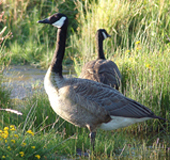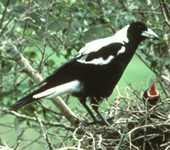|
This page contains notes placed by Tenick Dennison on the noticeboards
at Henley Lake from September 2005.
Tenick's notes describe birds, plants, fungae, animals and insects -
some of them troublemakers - that have made the lake and wetlands their
home.
BIRDS: (MOVE THE CURSOR OVER THEIR NAMES TO SEE THEM)
Australian Coot
A small black
water bird smaller than any of our ducks but frequently associating with
them on the main Henley Lake. Has a prominent white bill and white frontal
facial shield. Swims well with a jerking head movement and dives for its
food which largely consists of lake weed. Nests yearly under cover of
willows on main lake edge and adjacent ponds. Can be quite aggressive
towards ducks and will chase them away from its chicks. Their call is
usually a series or loud harsh "krarks".
Australasian Harrier
This is
our hawk or commonest bird of prey, and it is seen year round over the
main lake and wetlands.
Juveniles are a very dark brown and the plumage
becomes lighter with age.
This is the bird you frequently encounter on
the road eating road-kill possums and rabbits, etc. It eats a lot of
carrion but does actively hunt and kill rabbits, rats, mice and small or
injured birds. They fly slowly and low over the wetland ponds especially
in duck breeding season taking ducklings and are one of the reasons for
poor breeding success of some ducks.
Australasian shoveller
A
very fast flying duck with a large spatulate bill (spoon-shaped). Male in
breeding plumage has a blue grey head with white crescent in front of eye.
Bright chestnut flanks with a prominent white patch on sides in front of
tail. Female is same shape and size but of a nondescript brown coloration.
Feeds on surface and upper layer of water by side to side movement of bill
through water. Has a quiet "chuff, chuff, chuffing" call. Comes into land
on water quite quickly with a zigg-zagg motion as they descend and air
whistling through their wings is often heard.
Australian Magpie
Introduced
and conspicuously common. Males have brilliant white nape and back - in
the female it is smudgy white. In open grass land are one of our most
prominent birds and usually seen in family groups foraging for grubs,
worms and insects.
Will pillage eggs and young from small birds nests
and when present in large numbers reduce native bird population. Build
large, untidy but sturdy nests high in trees and may aggressively attack
any humans (especially children) who venture into their territory. Are
frequently trapped or shot by farmers.
Banded Dotterel - Tuturiwhatu
A starling sized brown bird more
commonly seen on the river but occasionally present on grass near lake
edge and in the wetlands. Is bigger than the Black Fronted Dotterel - also
has white underparts but on which are black throat and reddish chestnut
breast bands. Migrate and flock in large numbers to the eastern shore of
Lake Wairarapa in winter returning and claiming and defending vigorously a
breeding territory in the spring. They will try to lure humans away from
their nest by "broken wing" displays accompanied by distress calls. Some
South Island birds migrate to Australia for the winter but always return
to NZ to breed.
Barbary Dove
This cage bird
escapee which originally comes from Northern Africa, (Senegal, Ethiopia)
has now been reported on several occasions in the woodlands and wetlands
of the Henley Complex. It is often known locally as the Ring Necked
Dove.
It has a soft 'coo-crroo' call, with the second segment having a
lower and more prolonged note. Its call from a perch on a tree often
betrays its presence.
These birds almost certainly come from a flock
kept on a farmlet across the Ruamahunga River but in the 1970s a small
colony became established for a few years in the Cole Street - Pownall
street area.
Bellbird - Korimako
A
relatively common endemic (only found in NZ) bird that has been present in
Masterton, and in the Henley Complex, for the last three years. It has
been in small bush patches surrounding Masterton for years but has only
recently come to town. It is an olive green bird a little smaller than a
thrush and is one of our honey eaters, sharing the flowering gums, kowhais
and flaxes with Tuis and Silvereyes. Its clear call can be readily
mimicked and these birds can be called up quite close by a good whistler.
They are also readily attracted by a squeak bottle - some polystyrene
rubbed on a licked glass bottle. It is still not common here but it can be
heard calling in the wetlands on most days.
Black-backed Gull -
Karoro
Our largest New Zealand gull present at Henley Lake year
round feeding in large numbers at local rubbish tip and on farm land. Are
great scavengers and their numbers have increased enormously with European
colonization and resulting waste disposal from meat works, sewerage plants
etc. Will take and eat small ducklings. The young do not achieve smart
black and white plumage until about 3 years of age and although the same
size as adults their plumage is a smudgy brown. Breeds in colonies around
the coast with nests quite widely separated. The juveniles at the Onoke
Spit colony are caught and leg banded most years in order to learn of
their habits, longevity and distribution.
Black-billed
Gull
Essentially a South Island inland gull but a few colonies
scattered throughout the North Island and locally we have a colony of
about 100 birds who breed yearly along the Ruamahanga River or some of its
tributaries. Usually a few birds seen year round at Henley Lake and at
times a flock of 50 or more may be seen roosting on the point near the
boat shed car park. Have twice tried to breed in Henley wetlands but each
time colony abandoned probably because of human interference. Feed on
whitebait and small fish but are opportunistic feeders and take worms and
grubs exposed by cultivation and readily take bread or other scraps.
Blackbird - turdus merula
A
widespread European introduction brought to New Zealand by homesick
British settlers in the 1800s. The male shown here is jet black with
bright yellow bill - the female is a fairly uniform drab brown colour with
a less bright bill. Commonly seen all year round feeding on the ground.
They hop rather than walk and will turn their heads on the side close to
the ground as if listening for a worm or grub. Readily eat fruit and not
liked by grape growers. Are wonderful songsters, especially in the
breeding season in Spring, where they can be seen singing from high trees
in and around their territory. They do not repeat phrases of their song as
does the thrush.
Black fronted Dotterel -
Tuturiwhatu
One of the most recent additions to our native bird
list(self introduced from Australai in 1960). Is present year round at
Henley feeding on exposed muddy edges of wetland ponds and around lap
strip of main lake. Can be hard to see on the ground but its slow rather
jerky flight showing white on the wings, and its sharp "pit..pit..pit"
call in flight make it more obvious. Its nest in open shingle or bare
ground is completely exposed but the eggs are so mottled and fit in with
the surroundings they are extremely hard to locate. Their newly hatched
chicks the size of bumble bees begin foraging on their own immediately and
freeze among the stones if danger threatens.
Black Shag - Kawau
Our
largest shag present at Henley all year round. At a distance looks black
but close up body and wings have a copper tinge. Has a white patch on
cheeks and throat and facial skin at base of bill is bright yellow.
Juveniles are same size but are a dull dark brown without the white patch
and yellow facial skin. Generally feed alone by diving for about 20
seconds at a time. In Henley lake they catch perch and eels both of which
they must juggle carefully in order to swallow head first. Catch and eat
young ducklings. Will rest on trees or on lake edge where they frequently
spread their wings to dry. Nest in trees in colonies close to water often
in association with Little Shags.
Black Swan
A native
Australian Swan intentionally introduced into New Zealand in 19th century
as a game bird but probably also self introduced by birds flying the
Tasman.
Significantly smaller than the white Mute swan. Are only
partially protected and some 5000 birds are shot annually. Feeds mainly on
vegetation and is very useful at Henley as it consumes a lot of lake weed,
together with a lot of grass. Has a noisy take off as it "patters" over
the water for some distance with the wings striking the water on the down
stroke. White on the wings is very prominent in flight. Has a pleasant
bugling call. Occasionally nests on the islands in Henley Lake.
California Quail
This small
game bird is a native of western North America, was introduced in mid 19th
century and although not particularly common is distributed fairly widely
throughout the country. In the Wairarapa it is commonly seen along the
river beds among gorse, broom and low scrub but has only been recorded in
the wetlands at Henley this year. These birds have a characteristic
forward curving topknot crest and the male has a distinctive three
syllable call described as"chi-ca-gochi-ca-go" In the non-breeding season
they gather in small flocks or coveys and when disturbed fly off a short
distance with loud whirring wing beats. Their nests often hidden in
blackberry may contain 12+ eggs and the chicks when hatched will follow
their parents as they forage on the ground running in single file.
Canada Goose
Large brown
goose with black head and neck with prominent white cheeks and chin.
Introduced from North America as a game bird and several thousand shot
each year. Loud honking call when alarmed or in flight especially when
approaching a landing. Frequently seen in V formation flying out in
evening to feed over night on young crops and pastures, returning in the
morning to spend the day in and around the lake. Disliked by farmers as
three birds can eat as much grass a sheep and their copious droppings soil
the pastures. Breed most years on islands at Henley Lake and in
wetlands.
Caspian Tern - Taranui
Large
silver grey tern of almost world wide distribution Jet black cap with
strong red bill. Small breeding colony on Onoke Spit and periodically
single birds feed their way up the Ruamahanga River and spend a few days
at Henley lake. Flies over water with head and bill pointed down. On
inland rivers and lakes will dive for smelt, bullies, whitebait, small
trout and small eels. Harsh loud "kaaa" call often heard before bird
seen.
Cayuga
Chaffinch
A very widespread
European introductingon and seen from sea level to sub-alpine meadows.
There is some flocking in the winter but never to the same extent as house
sparrows or starlings. The male (illustrated) is one of our most beautiful
garden birds but the female is a rather drab light brown bird but with the
same white wing pattern as the male well seen in flight. They feed mainly
on the ground on seeds and on small insects, caterpillars, moths etc and
like sparrows feed their growing nestlings an invertebrate diet rich in
proteins. The female builds a beautiful open nest in a crotch in a tree,
lined with hair and feathers and camouflaged with lichen.
Dunnock
This European
introduction although commonly known as a Hedge Sparrow is in no way
related to our common sparrow. It is a small brown, rather secretive bird
which forages for caterpillars and insects among leaf litter on the ground
in wooded areas. It is never seen in large numbers but is present at
Henley throughout the year. It has a quiet melodious song which it
delivers from the tops of small trees. Sit for a while and watch a patch
of bush in the wetlands and you may see this bird and its mate working
through the fallen leaves.
Feral or Greylag Goose
These
are off spring of Greylag Geese (native to Northern Hemisphere) and have
been domesticated for centuries. Brought to New Zealand by early settlers
and many have become wild. Males are all white and show a "bump" on top of
their heads. Females whitish with brown on the wings as seen in
illustration. Graze on pasture, weeds, grasses and clover, often away from
water.
Grey Duck - Parera
This
native duck found also in Australia and South Pacific although widespread
throughout N.Z. is only rarely seen on Henley Lake It can easily be
mistaken for a female Mallard but has a much more defined eye stripe and
green on the wing as opposed to the blue shown by Mallards. Both sexes are
similar in appearance It interbreeds with the Mallard and although hybrids
are not uncommon here , the pure Grey Duck is not often seen on urban
lakes. Overall numbers of this bird have been in decline now for some
years.
Grey Warbler - Riroriro
A
common endemic found throughout the year in clumps of bush around Henley.
Sexes alike. Has a repetitive quavering song .Is very territorial and
objects strongly to other warblers invading its breeding territory. The
female builds an enclosed suspended nest with a tiny verandah over the
entrance.
Forages mostly in the branches of trees and shrubs for
caterpillars and insects. Shining Cuckoos lay a single egg in warbler's
nests and when this hatches the cuckoo chick ejects the warbler eggs or
chicks. The two tiny warbler parents finish up feeding a demanding
juvenile cuckoo which grows to twice their size. Grey Warblers are one of
the first birds attracted to squeaking some polystyrene on a licked glass
bottle - try this sometime near a bush clump in the wetlands. It is
amazing how quickly they come to investigate.
Grey Teal
A small grey brown
duck with lower cheeks, throat and upper breast a light cream brown. Brown
body feathers are all outlined in lighter shade. Both sexes alike. White
is seen in the wings in flight. Feeds on the water surface. Is a "hole"
nester and the green boxes on posts scattered around wetland ponds are for
their use.
Goldfinch
Another common and
widespread European introduction present all year round at Henley. Is the
most colourful of our finches with a brilliant scarlet face outlined in
white and bright yellow flashes on black wings. Is common in this country
but becoming more rare in the U.K. where it has traditionally been a
popular cage bird. Forms large flocks in autumn and winter, and is
predominately a seed eater with a liking for the seeds of Scotch Thistles.
The female builds a delicate open nest lined with thistledown and wool.
The female does all the incubation and over this time is fed by the male.
When the chicks are first hatched they are fed on regurgitated seeds which
are brought by the male ,fed to the female and then she passes them on to
the chicks. Can be attracted to your garden by leaving zinnia and marigold
flowers to ripen and dry.
Greenfinch
A widespread
European introduction seen occasionally around Henley but not in large
numbers. An olive green bird with a typical seed crushing finch-like bill.
Sexes fairly similar but male shows more yellow on the wing. Should be
readily distinguished from our other two "green" birds, the much smaller
silvereye and the much larger bellbird. It can often reveal itself by its
harsh repeated "dzweee" call. They are largely seed eaters both cereals,
brassicas and weeds and can be seen in autumn in large flocks often in
association with sparrows and goldfinches. A sure way to attract them to
your garden is to grow sunflowers and let the seeds ripen and remain on
the stalk. Be assured they will find them, carefully husk the seeds with
their strong bill and eat the kernels. Illustration shows a male.
House Sparrow
One of our
commonest introduced European birds and widely distributed around the
world. Is a gregarious bird living usually in association with humans. The
male is the more handsome with dark chestnut upper parts, grey underparts
with a distinctive black bib most obvious in breeding season. Female much
drabber, sandy brown above and underparts light grey - brown. Seed and
fruit eaters and enormous flocks can devastate grain crops and to lesser
extent fruit. Their young nestlings require protein and in breeding season
sparrows can be seen hunting spiders around eaves of houses. In autumn and
winter communal roosts in conifers or bamboo stands can contain thousands
of birds. One of the first birds to appear if bread is thrown out on the
lawn and almost always appearing when ducks are fed at Henley.
Little Black Shag
Groups of
these shags periodically appear at Henley and feed together by diving as a
coordinated pack. Groups of 3 or more may be seen at times diving and
surfacing together. About the same size as the Little Shag but plumage is
totally black with slight green tinge to feathers. Have longer slimmer
bill and shorter tail than Little Shag which is about the same overall
size. Catch small fish (mainly perch at Henley) in dives of 5-10 seconds.
Nest in willows overhanging water frequently in company with Little
Shags.
Little Shag - Kawaupaka
Our
smallest shag also present year round at Henley. Its plumage varies
considerably from all black to pied with variable patches of white on
cheeks, throat and breast.. Its short lemon yellow bill and longish tail
distinguish it from the all black Little Black Shag. It feeds alone by
diving for about 15 seconds catching small fish( currently perch at
Henley) frogs, tadpoles. It nests in trees in colonies close to water
often in association with Black Shags. Frequently see on the bank in the
sun with wings extended.
Mallard duck
Our commonest
introduced duck is found worldwide, and is readily attracted to feed on
bread. Illustration shows male and female with ducklings.Male is
exceedingly handsome with iridescent green-black head , white collar,
chestnut breast and pale grey body, black rump and under tail. Female is
brown and rather drab and can be confused with a Grey Duck but the black
eye stripe is not so prominent. In non-breeding season male loses
distinctive coloration and can resemble the female. Mallard and Grey Duck
can be distinguished by colour of their secondary wing feathers (those at
back of the wing closest to the body) -.blue in the case of Mallard and
green in the Grey Duck. Mallard and Grey can interbreed and there is a
decline in pure Grey Duck in NZ. Mallards are poor parents with male often
abandoning female soon after eggs have hatched and the usual clutch of 11
ducklings is soon reduced to 1-2 by many predators. Is a "dabbling" duck
feeding on the surface or just below by "up-ending".
Morepork - Ruru
This native
owl is widely distributed throughout New Zealand but is not really common.
It has always been present in and around Masterton but has only recently
been seen at Henley roosting by day in the eucalypts in the wetlands. They
tend to roost in dense foliage in an attempt to avoid being found by other
small birds who will mob them by fluttering around them making a lot of
alarm calls. They are known more by their classical 'morepork'call heard
usually at night. They feed largely on insects - wetas, cicados and moths
but also take small birds, young rats and mice. Moths attracted to an
outside light provide excellent feeding opportunities for moreporks and
their feeding behaviour can be interesting to watch. Their nest in holes
in trees or thick foliage contains up to three rather round white eggs.
All incubation is done by the female who is periodically called from the
nest by the male and fed. If you hear a flock of small birds making a lot
of fuss in a leafy tree, look carefully and you may see a roosting
morepork staring back at you.
Muscovy Duck
The Muscovy
Duck is a native of Central and South America and in spite of its name has
no Russian (Moscow) origins at all. They are large birds with the
characteristic extensive red facial patch. They have long claws on their
webbed feet and wide flat tails. The plumage of these domesticated birds
varies from black and white to almost pure white. They are often seen
cropping grass like the Canada Geese. They have been domesticated for
centuries and are bred essentially for their meat which has a strong
flavour, much different to the Pekin. Like the Pekin these birds at Henley
have been dropped off by breeders who no longer wanted them.
Mute Swan
A European
introductionthe birds here at Henley have been bred by members of Ducks
Unlimited and released here. Much larger than Black Swan. Males
distinguished from females by the larger more prominent black knob at base
of bill. Males can be very aggressive when breeding and will threaten
passersby, by spreading wing feathers and fluffing up neck. Are quiet but
not absolutely silent - make a hissing noise when aroused or aggressive.
Are largely vegetarians feeding on lake weeds and grasses.
New Zealand Falcon -
Karearea
Also known as the Sparrow Hawk. Not common, but seen
occasionally in the Henley Complex and most active in the early morning
and evening. It is a much smaller bird than the Harrier, is fearless,
aggressive and actively hunts live prey. In contrast to Harrier it rarely
eats carrion. It is unafraid of humans and will aggressively attack anyone
who approaches its nest. It is a very fast flyer with rapid wing-beats and
when diving on its prey does so at great speed. It strikes terror in small
birds and these will suddenly become silent if a falcon flies by. They are
endemic (found only in New Zealand) and are strictly protected but are
sometimes shot by pigeon keepers as they like and readily kill pigeons.
But prey usually consists of introduced finches, skylarks, blackbirds and
thrushes, rabbits and hares.
New Zealand Dabchick -
Weweia
Our endemic grebe - an infrequent visitor to Henley Lake,
present only in the North Island and is not common. Is a small brownish
water bird, smaller than any of our ducks with a rounded body, small head
and short sharp bill. Dives for all its food. If frightened will either
dive and swim well away underwater, or will patter across the surface of
the water with wings outstretched and a lot of splashing. Will carry two
to three of its newly hatched chicks on its back for a few days after
hatching.
New Zealand Pigeon -
Keruru
This endemic pigeon is found only in New Zealand. It is
distributed all over the country where there is suitable bush habitat but
is only occasionally seen within Masterton itself. They are commonly seen
in Greytown and Featherston. It is very tame and can be approached quite
closely and its trusting nature has in the past lead to its destruction by
hunters. It is fully protected and persons killing them are penalised
severely with heavy fines. Their preferred food is the berries of native
trees but they also eat the leaves of kowhai, tree lucerne (present along
the Ruamahanga River), broom and clover. In the fruit season I have seen
flocks of them feeding in old abandoned plum orchards. Their nests are a
poorly constructed platform of twigs through which their single egg can
often be seen from below,.They may have three nestings in a year but nests
are very prone to predation by possums and where the latter have been
controlled keruru often show a dramatic increase.
New Zealand Scaup
A small
dark fully protected duck , which dives and feeds under water on aquatic
plants and insect larvae. Is one of our endemic birds (a true native)
which is only found in New Zealand. The male shown above is a glossy dark
brown with a green sheen on its head and a golden eye. The female is drab
brown with a dull brown eye. Both sexes have pale blue grey bills tipped
with black. Flocks of 200 birds have been recorded on Henley Lake, and
they are present all year round. They can dive to 3 metres and commonly
stay under water for 15-20 seconds.They commonly "patter" along water
surface for some time before take off and flight over water is low with
white showing on their wings.
Paradise Shellduck -
Putangitangi
Our largest endemic duck frequently seen in pairs
(as they mate for life) but large flocks are common in non-breeding season
on paddocks grazing on grass. Male has a black head and dark body and
female has a white head and neck with chestnut body. These birds are very
territorial in breeding season and a pair will occupy and defend a pond
vigorously against other paradise ducks for some months before actual
nesting. Both parents look after offspring and breeding success rate is
high. If a harrier flies over ducklings, these will all dive and parents
will vigorously fly at and drive off marauder. Frequently call in sequence
- male a deep "zonk-zonk" followed immediately by females higher pitched
"zeek-zeek".
Pied Fantail -
Piwakawaka
These friendly, busy little birds present year round
in the bush and woodlands of Henley with their fearlessness ,erratic
flight and chattering 'chee,chee,chee,chee,' calls are very easily seen.
If you do some 'squeaking' by rubbing some polystyrene on a wet (licked)
glass bottle they are often the first to appear and will come very close
to you. They are insect eaters, catching most of their food on the wing
usually in sheltered areas in and around bush. Our other insect eater is
rhe Welcome Swallow but there is little competition for food as swallows
tend to hawk over grassland and open water. They build a neat open nest
with a long tail hanging down from it and can have up to 5 clutches in the
one year. They are very territorial during breeding and won't tolerate the
presence of another fantail around their nest area. There is also a
totally black variety - the Black Fantail - common in the South island but
rarely seen in the North.
Pied Stilt -
Poaka
Distinctive black and white wader with long pink spindly
legs which trail when in flight. Present most of the year feeding in the
wetland ponds and often over flying the main lake. They like shingle
beaches, river edges and shallow water where visibility is good. Breeds in
the wetlands in exposed places on edge of ponds or on gravel islands.
Vigorously defends the nest and chicks against humans and hawks by diving
at the intruder and making rapid "yapping" calls. Attacks on humans are
noisy but harmless.
Pekin Duck
These large,
friendly, always hungry white birds originated many centuries ago in
Nanjing, China and are derived from the wild, world wide distributed
Mallard. They are perhaps the commonest domesticated duck in the world and
are bred primarily for egg production and meat - under favourable
conditions they can lay up to 200 eggs / year. The traditional Chinese
dish - Peking Duck - is one of the many ways this bird is cooked. The
birds here have been dropped off by locals and have thrived from the
generous feeds of bread they receive. They have a lifespan of 10-12
years.
Pukeko
A common widespread
native present all year and breeds in the wetlands. Frequently seen in
family groups foraging within the vicinity of water. Feeds a lot on swamp
and pasture vegetation often holding vegetable matter in one foot eating
"parrot fashion".Has a harsh screaming call. Swims well. Flies clumsily
but strongly with legs trailing and often perches on trees. However it is
more likely to run away than fly if disturbed. Will eat eggs of ground
nesting birds, Pied Stilt, Black Fronted Dotterel and has been observed
catching and eating young ducklings.
Redpoll
Another common
widespread European introduction. Is our smallest finch (same size as a
silvereye) and is easily overlooked. Are small brown birds but in the
breeding season the male has a rosy pink breast, and both sexes have a red
flash on top of their heads. As finches they are seed eaters and can be
see in small flocks at Henley feeding in parkland on grass seeds. They
flock in autumn and in some places in New Zealand (Waikato) these flocks
have been estimated to be made up of over 100,000 birds. We don't have
these numbers here. Can be a pest to some fruit growers in spring when
they feed on and damage the buds of apricot and peaches. Are also disliked
by strawberry growers as they cause damage by pecking the seeds on the
outside of the ripening fruit. They become obvious in Masterton each year
in September when they begin nesting in suburban gardens.
Ring-necked Pheasant
An
introduced game bird occasionally seen at Henley. Has been imported on
numerous occasions from Europe since 1842 but is really a native of
Asia.The male, illustrated, is a quite large handsome bird, whereas the
female is smaller with mottled brown plumage and lacks prominent red
facial patch. Birds explode suddenly from the undergrowth when startled
and fly with noisy wing beats. In several places in New Zealand they are
bred on game farms and released for shooting. Their nest, in thick
vegetation may contain up to 15 eggs. They feed on seeds, berries and
insects.
Rock Pigeon
These are a widespread common
European introduction periodically seen flying over or drinking in the
Henley Complex. They live and breed on ledges and tops of the taller
buildings in Masterton - the Town Hall, Regent Theatre, the old Lincoln
Road Opera House etc. and under most road bridges - including Te Ore Ore
Bridge. Have become a pest in many cities and have earned the name of
"avian rats." They breed all year round depending on availability of food
and are seriously disliked by cropping farmers as flocks can ravage newly
sown pea crops.
Royal Spoonbill
These large
white birds with a distinctive long black spoon shaped bill have been
occasional visitors to Henley. They have been present on the Foxton
Estuary (among others places around NZ) for many years and are now being
more regularly seen in small flocks around Lake Wairarapa. They feed in
water as they walk along by sweeping their partly open bill from side to
side. Any food item, small fish, frogs, or invertebrates sensed by touch
receptors is trapped as it passes through. Some of these birds nest with
White Herons at Okarito but they also have several other nesting sites
around the country. They currently are not nesting in the Wairarapa but as
numbers at Lake Wairarapa gradually build up this may eventually
happen.
Sacred Kingfisher -
Kotare
Brightly coloured blue green native which can be present
all year round although quite a number migrate to the coast in winter to
feed in rock pools. Commonly seen sitting motionless on power lines or
exposed branch with good view of surroundings. More often seen away from
water and eats more insects, worms, and lizards than fish. Is known to
kill small birds (silvereyes) and feed them to their chicks hidden in a
hollow tree or in a riverbank hole. Harsh repeated "kek..kek..kek" call
heard more often in breeding season.
Shining cukoo -
Pipiwharauroa
This remarkable bird, not much larger than a
sparrow, leaves N.Z. in the autumn and flies over 2000 miles to over
winter in the Solomon Islands. It must make landfall on various islands on
the way but it is unable to swim so some of the laps must be 600 miles or
more - quite amazing for so small a bird. It is heard more often than seen
and its characteristic 3-4 ascending notes followed by a downward slurring
whistle can be heard in spring. If you can whistle the call can be easily
mimicked and often the bird will call back to you. All cuckoos typically
never build their own nests but lay a series of single eggs in nests of
other birds. Locally the bird chosen is the Grey Warbler and in summer it
is not unusual to see two small Grey Warblers bringing food to a large
Shining Cuckoo chick which grows to twice their size.
Silvereye - Tauhou
Self
introduced from Australia in the 1850s.Unknown until then by the Maori
hence its name, Tauhou, which means "stranger". A small bird with olive
green head and back, pale orange breast and distinctive white eye ring.
Commonly seen in small moving flocks in winter and readily attracted to
bird feeders taking fat, fruit or sugar water. At Henley is one of our
honey eaters feeding on eucalyptus flowers together with tuis and
bellbirds. Its delicate hammock like nest suspended from small branches
can be seen in bush patches in the wetlands in spring and summer.
Skylark
These songsters of
the open spaces, another European introduction, are present at Henley year
round but are only obvious in the breeding season when the male sings, on
the wing, high above his nesting territory in open grassland. Their
streaked spotted brown plumage make them hard to see on the ground. Will
sing from the top of fence posts and when doing this may show a small
crest on top of their head. Their nest, a grass lined cup on the ground,
is often party concealed by a clump of grass or a thistle and is very hard
to find. Their diet is grass and weed seeds together with insects and
other tiny invertebrates. They can incur the wrath of grain farmers by
following a row of freshly sprouted cereal, pulling up each shoot and
crushing and feeding on the freshly germinated seed.
Song Thrush - Turdus
philomelos
Common European songbird of the same family as the
blackbird and also introduced in 1800s by settlers who missed their
English birds. Both sexes are alike. Will also eat fruit but feeds mostly
on the ground on grubs and worms where it hops rather than walks. Thrushes
kill and eat snails. Each thrush has its favoured "anvil," a stone, brick
or piece of concrete path where it hammers the snail until the shell is
broken and the soft body can be eaten. These may be readily recognized
around the garden by the presence of a large collection of broken shells.
Is a good songster and I find the only way to distinguish it from the
blackbird is by noting the repetition of phrases. Remember Browning's
"Home thoughts from abroad" "That's the wise thrush, He sings each song
twice over." They are not as common as blackbirds and not so "bossy" or as
aggressive. Their mud lined nests with their blue, black spotted eggs are
commonly found at eye level in low bushes in the wetlands.
Spur-winged Plover
A self
introduced native from Australia first reported in New Zealand in the
1930s and since the 1960s has been widespread and common. Present year
round at Henley often in noisy flocks or in pairs in breeding season. Is
one of our earliest breeders and nests have been found locally in May.
Strident unmistakable calls and slow deliberate wing beats in flight. Has
very obvious yellow facial wattles and a spur in the front at the bend of
the wing. They aggressively defend their nest and chicks and noisily dive
bomb intruders and drive off Harriers or Magpies which come too close.
Starling
Every one knows
this common widespread European introduction - one of our commonest birds.
They are the shiny black birds which strut around our lawns(rather than
hopping - as do blackbirds). They energetically probe the turf and soil in
their search for insects, grubs and worms, and leave small holes in the
ground where they have been. The use, in the past of DDT to control grass
grub, reduced starling numbers drastically, but since this pesticide has
been banned they have made a come back. Starlings are perhaps our most
obvious flocking bird and large numbers will be seen together foraging in
damp pasture. In the non-breeding season they come together in the late
afternoon and evening in communal roosts, and may fly as far as 30kms,
away daily to feed. In late afternoon flocks will converge from all
directions onto the plantation where they spend the night. There are
currently roosts of thousands of birds right within Masterton itself.
Starlings are a mixed blessing. They help control grass grub but also can
devastate apple and grape crops. Illustration shows a starling in
non-breeding plumage with buff outlines to its feathers. These feathers
edges wear off and the characteristic shiny iridescent purple green sheen
appears in the sunlight.
Tui
This common endemic
(only found in NZ.), also known as the Parson bird, is present year round
at Henley and its numbers locally around Masterton appear to be increasing
fairly rapidly. This could be due to more successful possum control
resulting in better breeding success with less nest interference. The Tui
is one of our honey eaters and may be seen feeding on flax, kowhai and
eucalyptus where it competes with Bellbirds and Silvereyes. It has a noisy
whirring flight which immediately distinguishes it from the smaller
introduced Blackbird, present also in large numbers here. Its song, which
can be very melodic, but also consist of a lot of clicks, coughs, wheezes
,varies locally and individually. It is a great mimic and where Bellbirds
are also present it can copy some of their song improving and extending
its own repertoire.
Welcome Swallow
A fast
flying small fork tailed blue black bird with orange red face and throat.
Arrived in New Zealand in the 1950s and has rapidly spread all over the
country. Is an insect feeding catching its prey on the wing and usually
seen hawking over open country and water. Will take insects from the
surface of water and large flocks may be seen over Henley Lake or wetland
ponds when an insect hatch is occurring. They build open mud nests under
culverts , bridges or eaves and in wetland ponds two small table like
structures have been erected for them as nest sites. Here a pair will
occupy ech site and usually raises 2-3 clutches a year. Although they
compete with Fantails for insects they do not appear to have endangered
the latter in any way as their feeding sites differ. Fantails feed in
forest clearings and sheltered spots, Swallows feed in the open. Welcome
Swallows are present year round and do not appear to migrate in this
country.
White-faced Heron
This bird
also known as the Grey or Blue heron is our commonest heron and is often
seen around the wetland ponds.Native to New Zealand, but also common in
Australia and South East Asia, it has been reported here since 1865, but
has only been common in the last 50 years. Their white face is very
distinctive and they are only about 2/3 the size of the rare White Heron.
Around the Henley Complex they feed in the ponds and during or after rain
on the open grass land. They are commonly seen on irrigated dairy farms.
They feed on frogs,small fish, aquatic insects and earthworms, but have
been observed catching and eating mice and on rare occasiions small birds
such as silvereyes. They may be seen standing motionless in shallow water
searching for passing prey which they capture with a lightning jab of
their dagger like bill. They are solitary nesters and are not found in
crowded colonies like the White heron.The very untidy nest of thin sticks
is built high in trees - often eucalypts or pines - the young only leaving
the nest when they can fly. </P>
White Heron - Kotuku
These
birds which have never been common in this country (even in pre-European
times) have visited Henley on at least three occasions. They are
distributed world wide and in Australia are very common particularly in
the tropical regions. They frequent wetlands and estuaries and in the
non-breeding season are usually solitary. They feed on small fish, eels
and frogs often standing motionless for minutes at a time. In the spring
all breeding NZ birds congregate at Okarito, a kahikatea swamp on the
Waitangiroto River on the West coast, where they nest in the tops of
trees. Strangely this is the only recorded breeding site of this bird in
New Zealand.
PLANTS:
Azolla rubra - Red Pond
Weed
At this time of year as the weather is getting hotter you
may notice that the ponds in the wetlands are becoming covered with a red
weed. This is a harmless native NZ water fern. It begins as a green
floating mat which spreads rapidly on still water and with the sunshine
and heat it changes to a dark red colour. Its tiny roots hang freely into
the water. The ducks leave tracks through it as they feed and it provides
shelter and protection from predators (White faced herons) for small fish
- shoals of tiny perch.
Curly Leaf Pondweed - Potamogeton
crispus
Another invasive pondweed introduced from Eurasia which
can spread both by seed and by stem fragments. Now common throughout New
Zealand, especially the North Island. It is a fast growing perennial with
flattened branching stems which can also form dense weed mats in the
spring. It can be controlled by cutting, dredging, and spraying and
interferes with all water activities the same way as Elodia Canadensis
Duckweed
A tiny green
plant of world wide distribution which grows rapidly on the surface of
still water (rich in nutrients) forming a mat through which you can trace
duck tracks - is currently covering most of the Little Pond in the
wetlands. Duckweed has very small green 'leaves' from which a small root
hangs down into the water without the benefit of a stem. Some duck species
and some fish eat the 'weed' and it is spread by ducks on their feet and
bodies. It is one of the natural water purifiers. Duckweed can be dried
and used as cattle fodder (contains 25-45% protein - higher in some cases
than soya beans) and under optimal farming conditions can yeild 10-30 tons
of dried product per hectare per year. In parts of Asia is utilized as a
human food source - khai-nam. Should not be confused with the small native
water fern Azolla rubra which forms a deep red mat on ponds - also present
at times in wetlands.
Fennel
This is currently flowering in
profusion along Colombo Rd. adjacent to the bridge and on Ruamahanga River
bank as you enter the wetland pathway. Yellow showy flowers in large
umbrels up to 2 meters high. Is a common introduced herb and aniseed
smelling seeds are used in bread making, fish dishes and other forms of
cooking.
Hemlock
Highly poisonous, up to 2 meter
tall, branching, ferny leafed introduced weed distinguished by the blotchy
purple red spots on its stalks. Small white flowers in umbrels on the top
of the stems. Seen currently in new plantings especially on south side of
Island Lagoon. Socrates died from hemlock poisoning.
Koromiko - hebe stricta
This native is a
fine leafed upright growing hebe currently flowering in the school's
wetland plantings. The flowers are white or slightly bluish and are seen
in summer and autumn. This shrub is found naturally on flat of low hill
country and can be seen flowering extensively on the hills as you cross
the Rimutakas. It grows rapidly and is one of the first natives to come
back when bush is regenerating. It was used in several ways medicinally by
the Maori.
Lake weed - Elodia
Canadensis
Originally native to N. America but has spread
worldwide and now is present in most NZ. lakes. It was commonly sold as an
oxygen plant for aquariums. It is the major weed problem in Henley Lake,
growing rapidly in warm temperatures. It forms dense mats and can be seen
above the surface when water levels low. It spreads from plant fragments
settling in the mud. It interferes with all water activities including
fishing and swimming. It is practically impossible to eradicate. Once
established, but can be partially controlled by cutting and dredging,
spraying, grass eating carp ( some of these were introduced in the 1990s
and 6-8 of these now large old fish remain) and water fowl (geese, swans,
coots, etc). Was recently dragged in large quantities by winches and
tractors with wire ropes along sections used by dragon boats.
Toetoe - Cortaderia spp.
There are five
species of this large native tussock grass which is classed as one of the
"cutty grasses". It grows rapidly into large clumps and displays these
distinctive erect loose flower heads in early summer. Traditionally the
leaves were platted and used to line inner walls, roofs and partitions.
They are still used for tukatuka panels. It can easily be confused with
the South American Pampas Grass which is found extensively both planted
(cattle food and shelter) and growing wild as a pest weed.
Weeping Broom - Carmichaelia
stevensonii
This rare native broom is flowering at present along
the pathway which runs beside the first of the wetland ponds - the Wader
Pond. The clusters of heliotrope flowers really transform this normally
straggly, leafless plant which belongs to a genus of 24 species - 23 of
which are endemic to New Zealand. This species is now rare in the wild but
can still be found along the Clarence and Awatere Rivers in N.E South
Island. It can grow to a height of 9 metres and prefers poor soils and dry
conditions. It is only very distantly related to the introduced common
European broom which is a pest weed and something we continually try to
eliminate from the Henley Complex. We have managed to propagate a few
plants from seeds from these plants and hope to plant more in the wetland
area. If you wish to collect some seeds later in a couple of months or so,
and propagate some more plants for us we would be very grateful . . they
are not the easiest things to grow.
Wild Carrot - Queen Anne's
Lace
Upright (up to 1 meter) ferny leafed plant with white
flowers in umbrels which can be distinguished from hemlock as the stalks
are uniformly green (lacking red blotches of hemlock) Is the ancestor of
the common carrot. Prefers dry ground and commonly seen on roadsides.
Dried seed heads acquire a concave shape and have been likened to small
birds nests.Sometimes present in the wetlands.
Swamp Cypress
These are a species of
conifer native to the south east of USA. There are two stands of these
trees at Henley. One group is close to pathway around main lake about 100
metres beyond Woodland Pathway turnoff. The other group are close to the
wooden bridge over the feeder stream, to wetland ponds. Classical pictures
of them from the Everglades show them growing in water with large
buttresses and woody projections from the roots called "cypress knees".
Our cypresses growing here, close to water, but not in it, don't show this
characteristic. Swamp Cypress can grow to over 30 metres and can live for
over 1000 years. They are deciduous with their feathery bright green
foliage changing to rust brown in autumn before it falls and trees become
bare.
Lacebark & Ribbonwood
These closely
related species both exhibit strips of lacy ribbon like layers under the
bark which the Maori used for ropes and nets and the early Europeans used
for trimming hats and dresses. Lacebarks are currently flowering in the
wetlands (late summer) with large clusters of white sweet scented flowers.
Readily seen in Lakeview 2005 plantings and on the feeder stream edge by
the concrete culvert. Ribbonwoods flower earlier (spring) and have
insignificant green or yellowish small flowers in clusters. (male and
female trees). Good examples of Ribbonwoods, with some still showing a few
flower clusters , can be seen in the second native planting on your right
after crossing the concrete culvert. Ribbonwoods are one of the few NZ
natives that are partially deciduous and can shed their leaves in winter
and in very dry spells (like recently) Leaf size and shape varies
considerably within both species but on the whole lacebarks have longer
larger leaves while ribbonwoods are often shorter and rounder. Both
species can have small leafed juvenile forms.
FUNGAE
Red Toadstool - Amanita
muscaria
These appear at this time each year in association with
birches and poplars along the west side of the main wetland feeder stream.
Have a look for them - although very poisonous if eaten, they are most
attractive.
Appear first as small light brown "buttons." This brown
skin, fragments, as toadstool grows producing the spotted effect.
Are
found worldwide and may have been introduced to NZ. through the
introduction of certain deciduous trees.
ANIMALS:
European Wild Rabbit
This
our common 'pest' rabbit was confined to Spain and Morocco up to 2000
years ago and was spread by the Romans around Europe. After they were
introduced to N.Z, in 1864 they multiplied incredibly and in spite of all
attempted control measures have remained a problem ever since. An adult
female can produce up to 5 litters a year and young females born in the
first litter can breed before the end of the season. Rabbits are
gregarious living within a territory of a few hectares surrounding a
warren containing a group often lead by a dominant buck and
doe.
Rabbits do most of their feeding at night preferring short grass
and dry conditions. When rabbit numbers increase too greatly and food is
scarce they may be seen feeding during daylight hours. The maze(in the
wetlands) was a wonderful haven for them but since it has been removed
their numbers around the wetlands have fallen significantly.
Rabbits
demonstrate the strange behaviour of re-ingestion where their faecal
pellets are re-eaten. This is not because of hunger but is a means of
getting the full nutritional value from rather poor quality food.
Rabbits are great survivors and in spite of introducing ferrets,
stoats and weasels, poisoning and trapping extensively, and the
introduction of two viruses which kill them, they still survive and indeed
are again reaching plague proportions in some parts of the South Island.
Brown Hare - Lepus
europaeus
Although these may look a bit like a rabbit they are
quite unrelated and are very different animals. They were introduced from
Europe first in 1851 for sport and as a source of food. They are not
commonly seen around Henley but on occasions appear in the farm section or
on the open parkland. They are almost twice as big as rabbits, are brown
in colour and prefer open country as opposed to the gorse, broom and scrub
preferred by rabbits. They have much longer ears than rabbits and avoid
danger by running and can reach speeds of over 35kms / hour. They do not
make burrows and live all their life above ground.
Whereas rabbits are
born naked and blind, underground in a burrow, young hares(leverets) are
born fully furred, seeing and above ground. Hares are essentially solitary
creatures although they fraterenise amiably enough with others they may
encounter, but never belong to colonies like rabbits. Like rabbits they do
most of their feeding at night, resting up during the day in regular well
used depressions in the ground called 'forms'.
During the breeding
season the behaviour of the males is both strange and interesting,
especially when several are competing for the favours of a female. This is
the time that Europeans refer to them as the 'mad March hare'. Competing
males will stand high on their hind legs facing one another and appear to
engage in a boxing match. They will break off from this to follow the
female for a short space of time and then repeat their apparent boxing all
over again.
Hares have a nasty habit of eating the bark of young trees
and can be a real problem in young forestry blocks.
Brushtail Oppossum
These were one of our first animal introductions by Europeans and were brought in from Australia in the 1830s ostensibly to form the basis of a fur trade. They were first released around Riverton and are now to be found throughout NZ including Stewart Island and the Chathams. Possum numbers are just estimates but a population of 70 million is often quoted.
For almost 100 years little thought was given to any harmful effect possums might have had on our flora and fauna. It gradually became obvious that rata foliage was particularly attractive to them and rata trees were being decimated. More recently we have direct evidence that possums not only eat birds eggs but also have video records of them eating chicks and even some adults.
No method of possum control is perfect but the controversial 1080 seems undoubtedly to be the most effective. Although some birds may be killed indirectly soon after a poison drop, where there has been a good possum kill, there is almost always a significant later increase in native bird numbers. It is unlikely that we will ever get rid of them entirely but if their numbers can be kept well down our forests and birds will benefit enormously.
Feral Cat - Felis catus
Any domesticated creature which has gone back into the wild can be described as 'feral'. Our concern at Henley applies to wild cats. These may have just been abandoned pets, ones that have gone wild or those born in the wild. It is not unusual to see one of these in our wetlands and if they spot you they will usually quickly run for cover.
Cats escaped from ships in the 1800s but were also released in large numbers in an attempt to control rabbit numbers. Unfortunately they did not confine their hunting entirely to rabbits (which in some instances they did help control) but found the native birds easy prey and in some localised areas such as islands they were responsible for completely wiping out some species.
They still kill and eat and provide some control over rabbits, rats and mice but at least 15% of their diet is made up of birds and they can destroy a lot of ducklings.
They are spread right across the country from the coast to the mountain forests, live about 4-5 years and have few predators other than man.
Ferret - Mustela
putorius
Another unwelcome introduction from the UK. also
brought in to control rabbits. It is the biggest of our Mustelids and can
measure up to half a metre from nose tip to tail. It is usually dark brown
all over with creamy underfur next the skin with a paler face and dark
mask like strip across the eyes. Pure white albinos with pink eyes are not
unusual - indeed the writer had a pet white ferret as a child and used it
for rabbiting. Put nets on all the holes of a rabbit warren, release your
ferret into one of the entrances and wait for action. You usually didn't
have to wait long before terrified rabbits came bolting out and became
entrapped in your nets. A very exciting and lucrative pastime.
Ferrets
prefer open dry country but will enter bush as was found at Pukaha last
year when a large ferret entered the reserve and killed several kiwi. They
are very strong for their size and can easily hold and kill a struggling
rabbit.They eat almost anything in the meat line, rabbits, rats, mice,
birds including domestic fowls, lizards, frogs and carrion.
No where
near as common as stoats but not infrequently killed by traffic on our
roads.
Hedgehog - Erinaceus europaeus
Hedgehogs were first introduced from Great Britain to South Island in 1869 but didn't come to the Wairarapa until around 1905. They are now spread widely but avoid alpine regions and wet bushland. They are most active at night and may often be heard 'snuffling' their way around your garden in search of slugs, snails, and other insects. They are usually considered a friend of gardeners and fairly harmless creatures but more recent investigation reveals that they plunder ground nesting bird nests eating eggs and chicks, and also catch and eat skinks.
In the colder parts of NZ. hedgehogs hibernate during the winter months under buildings, in piles of leaves or sometimes compost heaps. During hibernation their body temperature can fall from 37 to 1 degree, their heart may only beat once a minute and they may only take a breath every five minutes. Up to two litters of 4-5 hoglets can be produced in summer and these become independent after about 6 weeks.
Although rarely seen around the wetlands at Henley hedgehogs are common and when we were trapping for stoats around the ponds two years ago we caught more hedgehogs than stoats.
House Mouse - Mus musculus.
These tiny animals arrived, uninvited in New Zealand in the early 1800s as stowaways on sailing ships. In Europe they almost always live in close association with humans whereas in this country they can live independently and thrive in native bush where there are beech trees, eating the beech tree seeds. However wherever people are living in this country you will almost certainly find mice.
Mice are prolific breeders, can commence breeding at 6 weeks of age, can have up to 10 litters a year with an average of 6-10 / litter. In the wild their life expectancy is usually less than one year but in captivity as a pet can survivr 2-3 years.
Mice are territorial and a dominant male will often control a territory containing several females driving off any other male intruders.
Mice are omniverous consuming almost anything edible. The damage they cause to food in this country causes millions of dollars of damage yearly.
The first resident of the recently built Henley Men's Shed was a mouse.
Norway Rat - Rattus norvegicus
In spite of its name this rat originated in Russia and only invaded Europe and England in the 1700s. They probably first came to NZ in the 1800s on whaling ships. They are our largest rat and can reach a weight of 500gms. as opposed to the 170gms of the Ship rat.
Norway rats , in contrast to Ship rats like water and often live close to it. They are ground living and live in burrows and buildings and are very good swimmers. At Henley they live along the streams and wetland ponds and their tracks and tunnels can be readily seen if you pull back some of the undergrowth. You can often see their tracks in the soft mud around the ponds edges.
These rats kill a lot of our young ducklings and predate nests of other ground nesting birds. They in turn are predated by stoats, ferrets and feral cats.
Like the other rodents they are prolific breeders and one female can produce 50-60 young in a year. Pet rats and those kept and bred in laboratories for use in research belong to the Norway strain.
Ship Rat - Rattus rattus.
This rat originated in the rain forests of South East Asia gradually spreading to the Middle East and in the 12th century AD first reached Europe on ships returning soldiers from the Crusades. Probabl;y first reached NZ. on Captain Cook's Endeavour, which was badly infested with rats, in 1769-70.
Ship rats are smaller than our other local rat (Norway Rat), they have much longer tails and a more pointed head. Although often called the Black rat only about 30% have this colouration and most are a grey-brown. They are great climbers often living in trees and are serious predators of our native birds. They are spread right throughout NZ preferring drier conditions than the Norway rat but as well as living in high numbers in our towns and farms, they survive and breed well in our native forests consuming a lot of the tree seed production. Locally they are our commonest rat.
Are prolific breeders with up to 5 litters a year with average litter size of 6. This rapid reproduction rate tends to make up for their relatively short life span which can be less than one year.
They are omniverous and cause millions of dollars of damage to stored grains and other foodstuffs.
Stoat - Mustela
erminea
This European carnivore was also introduced and released
in very large numbers in the 19th century in an attempt to control rabbit
numbers. It is intermediate in size between the much larger ferret and the
much smaller weasel. It is a smart looking little animal, brown above with
a black tip to its tail and cream underparts and around 35 cms. in
length.
It is our commonest and most troublesome predator of ducklings
in the Henley Complex. They have spread right across the country from the
shoreline to high in our mountains and have had a devastating effect on
our native birds. They are present year round at Henley and it is not
unusual to see them in the day. They are good swimmers and I have seen
them swimming back from islands on the main lake. They are good tree
climbers and will readily rob nests. Their presence up a tree frequently
attracts a flock of small birds which very noisily 'mob' the stoat. If you
hear and see a lot of birds making a fuss in a tree, look hard and you may
see the reason for it - often a marauding stoat - or perhaps an
Morepork.
Stoats give birth in early summer and can have litters of up
to 12 'kits'. The old barn in the farm section of Henley is a place where
stoats often live and breed. Some of our dog walkers have dogs which hunt
and kill stoats - something to be encouraged.
Southern Bell Frog - Litoria
raniformis
This frog, native to the southern states of Australia
(where is is now on their endangered list) was introduced into NZ. in the
1860s and is the most widely distributed frog in this country. It likes
still water and its 'kraak-kraak-kraak' calls are often heard in spring
and early summer around the ponds. It can grow to 10cm. in length and its
colour can vary from light green to very dark. Frogs take up oxygen
largely through their skin and mouth lining, but do have lungs and use
them, gulping air, when very active. They are very sensitive to pollution
and this has reduced their numbers seriously. 50 years ago every little
pool seemed to have its resident frogs, eggs and tadpoles - this is sadly
no longer the case. Frogs, worldwide are declining in numbers partly due
to a fatal fungus infection which has now reached NZ. but as well as this
and pollution at Henley they also have to contend with eels, herons and
shags. You are more likely to hear them than see them but watch quietly
when they are calling and you may see them floating on the surface or
sitting on the bank.
Weasel - Mustela
nivalis
These tiny animals are present at Henley as I have seen
one about a year ago close to the main feeder stream in the wetlands. They
are said to be the smallest carnivore in the world and are so small they
can climb through a mouse hole. Like its other Mustelid relations (Stoats
and Ferrets) they were brought from England and released in large numbers
in the 1880s in a futile attempt to control rabbit numbers. This was an
expensive business as apair of weasels cost around five pounds
sterling.
Weasels are not common in this country and I would question
if they ever had any significant effect on rabbit numbers. They tend to
live around farm buildings where mice and small birds abound. Mating
occurs in the spring and with a gestation period of seven weeks they can
often produce three litters in a year.
Mustelids generally tend to be
rather unsocial animals and even family groups tend to break up as soon as
the members can hunt independently. They can climb trees with ease and
must eggs and chicks of many small birds.
INSECTS:
Asian Paper Wasp - Polistes
chenensis
These wasps were recently found in the Henley
Wetlands. They first appeared around Auckland in 1979 and have gradually
spread southwards. They build small nests out of `paper' produced by
chewing wood mixing it with saliva. Their nests are about the size of a
clenched fist and may be supported by up to 100 wasps.
Unlike the
German Wasp (also present at Henley), which nest in buildings or holes in
the ground, the Asian Paper Wasp attaches its nest to the end of a branch
of a shrub or tree. It is not as aggressive as the German Wasp but can
certainly sting - as our photographer will testify.
They feed on
insects, spiders and caterpillars.
Emperor Gum moth
Currently
if you look carefully at fresh young gum leaves on trees along woodland
pathway, you may observe some partly chewed and with luck may see the
culprit - a beautiful blue/green caterpillar up to 7-8 cms. long. This is
the larval stage of the spectacularly large Emperor Gum Moth - a native of
Australia but present throughout New Zealand feeding on Eucalyptus and
Pepper trees. The adult moths do not feed, live only for about 2 weeks and
are not easily seen. The cocoon is a very tough brown nut like object
firmly fixed to a branch or the tree trunk. The moth emerges after about a
year. | 






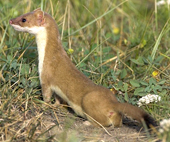



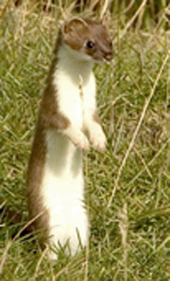



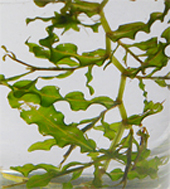

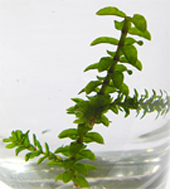














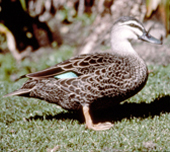















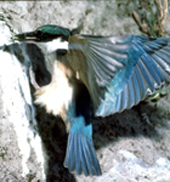




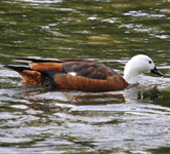




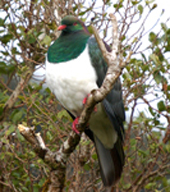
.jpg)
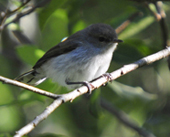


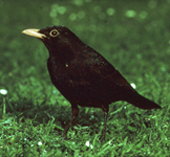
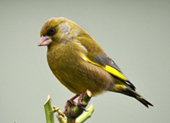

.jpg)
